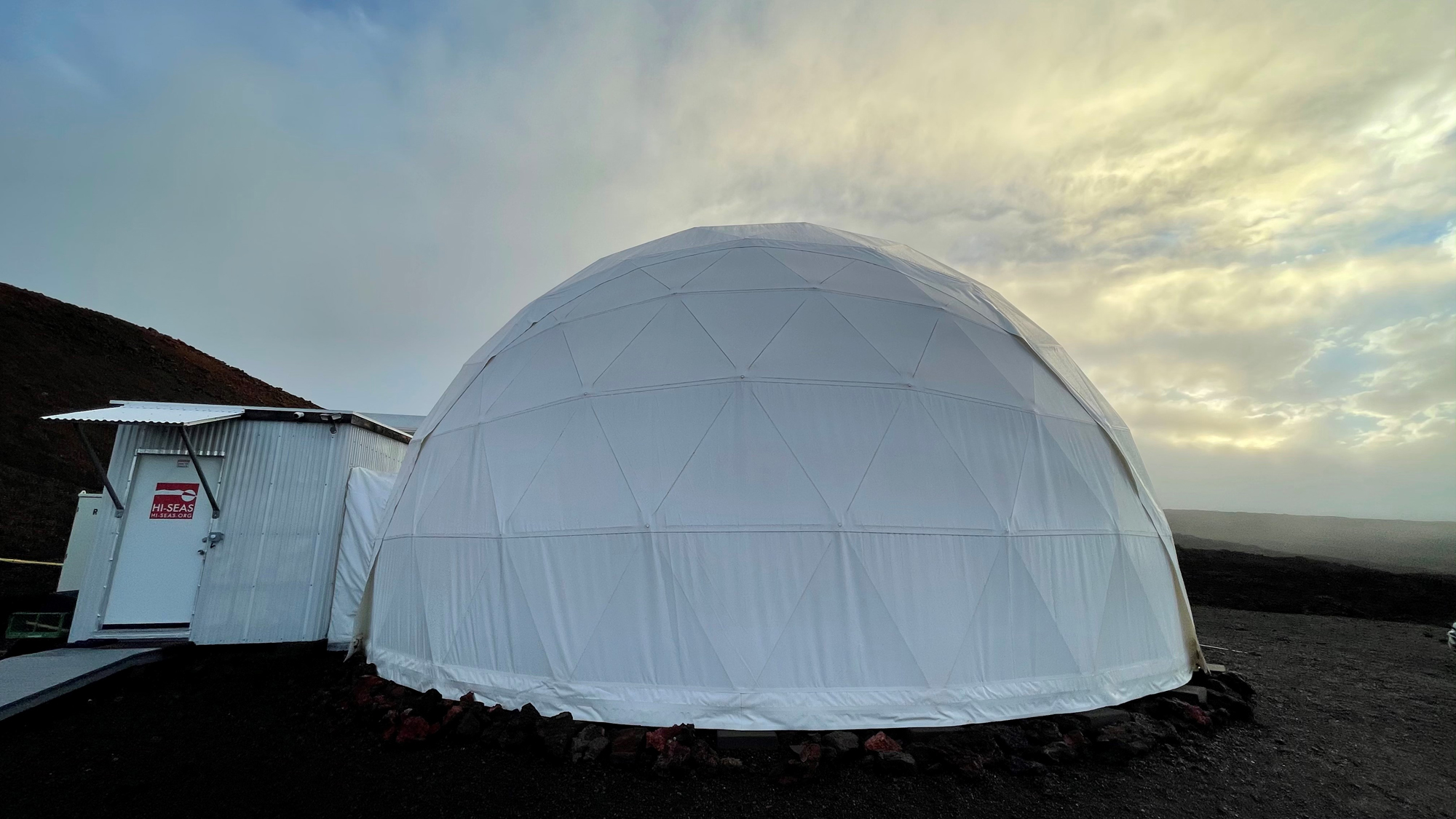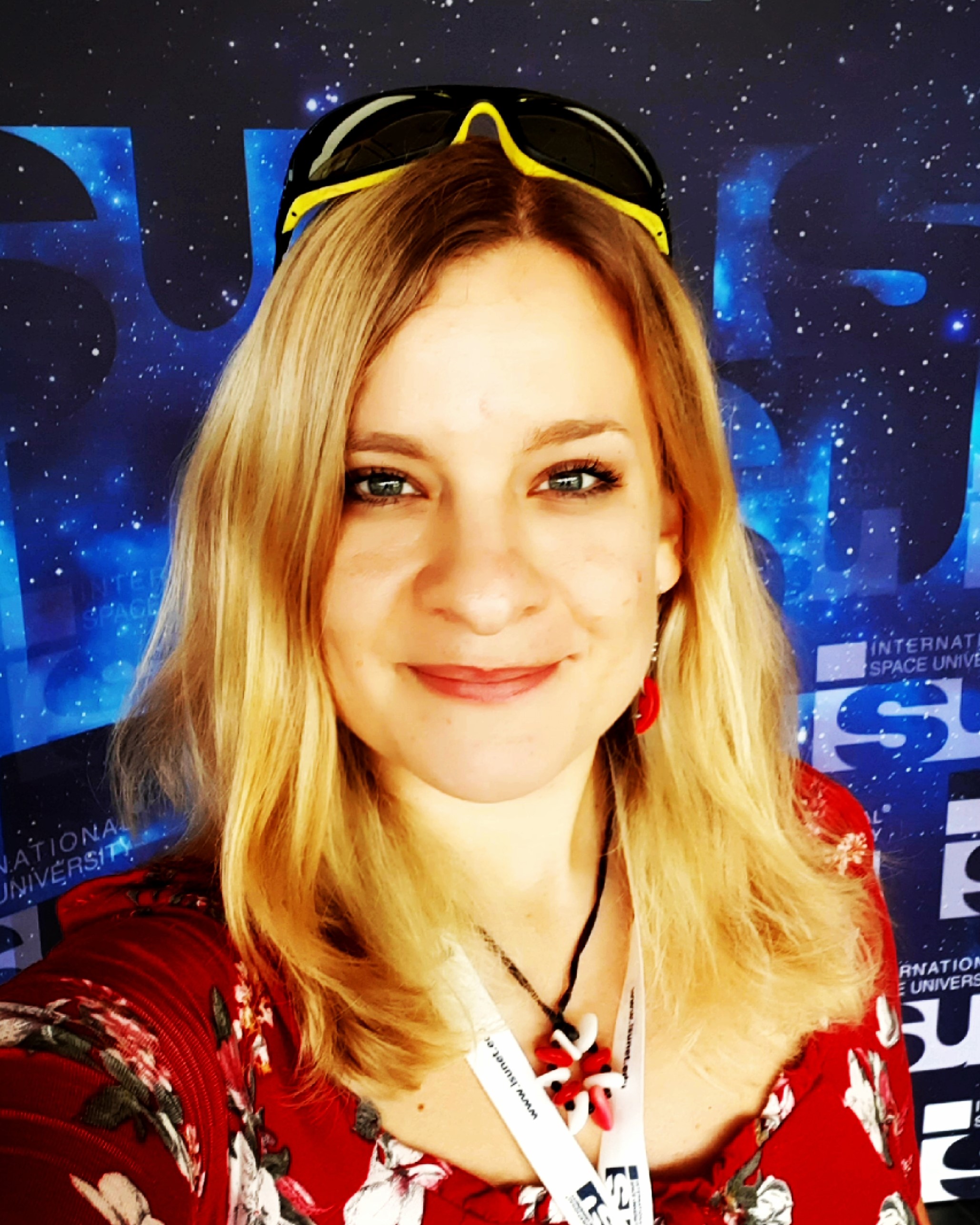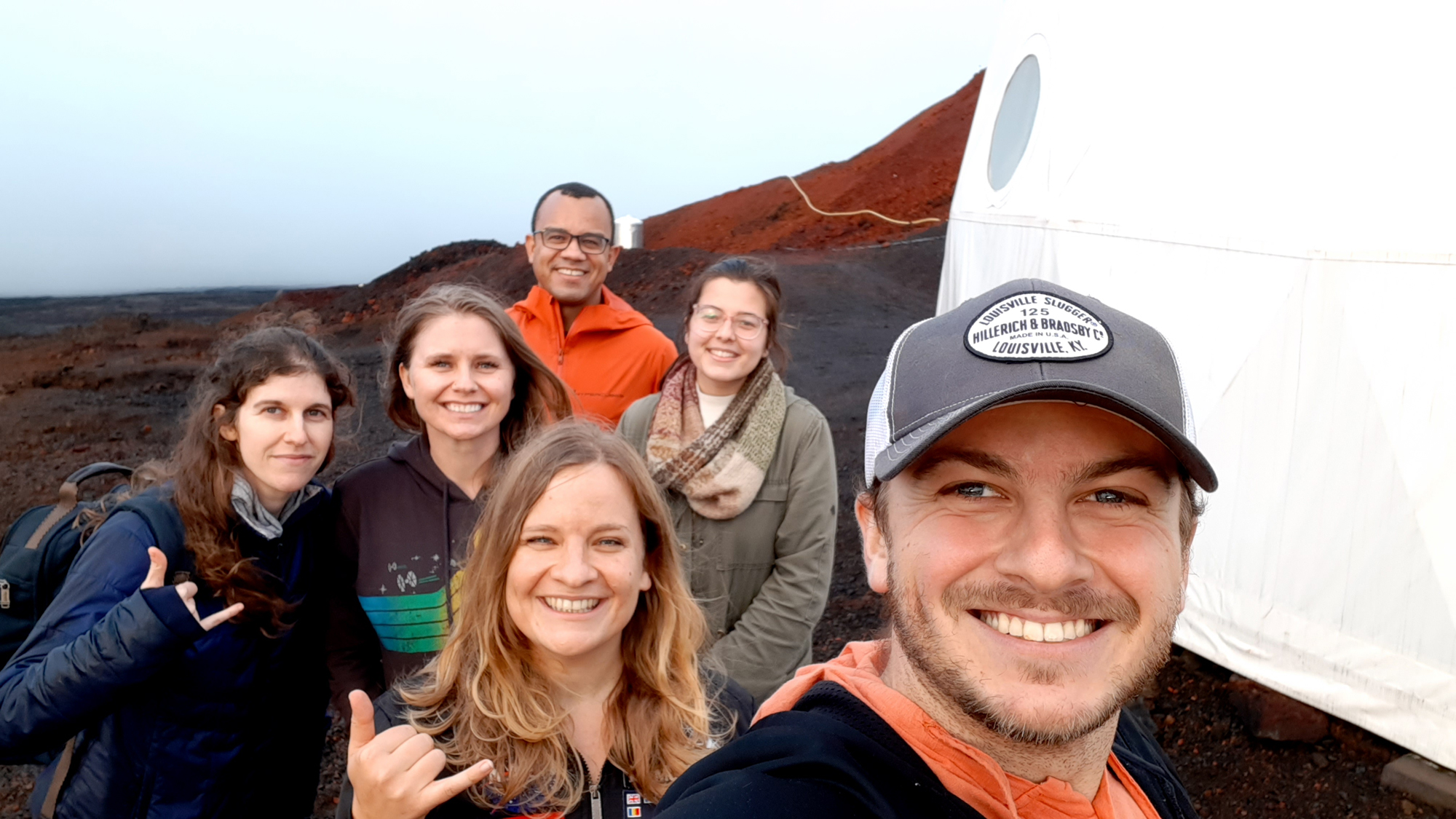Powering through challenges of the Selene II lunar analog mission — Commander's report: lunar day 7
A crew of analog astronauts is currently facing challenges in a simulated moon mission at the HI-SEAS habitat.

Dr. Michaela Musilova is the director of Hawaii Space Exploration Analog and Simulation (HI-SEAS) program, which conducts analog missions to the moon and Mars for scientific research at a habitat on the volcano Mauna Loa. Currently, she is in command of the two-week Selene II mission and contributed this report to Space.com's Expert Voices: Op-Ed & Insights.
Commander's report for the Selene II mission at HI-SEAS
Lunar Day 7 (Nov. 24, 2020)
"There's no hope on the horizon"— those are definitely the gloomiest words that I have ever spoken during a mission. Looking out of one of the two windows in our habitat did not bring me any solace. All we could see are thick, grey clouds. The Selene II crew has been confined to the inside of the HI-SEAS analog space station for over five days in a row due to so called "lunar dust storms" (rain storms or thick fog). Our habitat is located at 8,200 feet in altitude on Mons Hadley, the Moon (a.k.a on the volcano Mauna Loa in Hawaii). At this altitude, the storms can linger for days on end. We can’t leave our habitat during these storms, as we would risk getting injured and our EVA (Extra-Vehicular Activity) equipment would get damaged. On the moon, this would mean potentially dying.
The crew is comprised of Operations Officer Fabio Teixeira, who is the Founder and CEO of Hypercubes, a startup with roots at the International Space University and Singularity University. He is a visionary space entrepreneur with a holistic approach to food security and sustainability. Our Crew Journalist is the photographer Cassandra Klos. She is one of our three Mars analog veterans who has been working on a long duration project on space simulations.
Dr. Lindsay Rutter is another Mars analog veteran who currently holds a JSPS Postdoctoral Fellowship at the University of Tsukuba. She is the Crew Bioengineer and she's using her bioinformatics and bioengineering background to study large space biology datasets. Our third Mars veteran is Karen Rucker, who is a spacecraft radiofrequency engineer performing the role of Crew Systems Engineer for Selene II. Karen is passionate about STEM outreach, improving communication in space and in remote analog environments like at HI-SEAS. Ben Greaves is a returned agricultural Peace Corps volunteer and our Crew Engineer, with a background in controlled environmental agricultural engineering. His research is deeply involved in hunger equity and designing off Earth greenhouse systems. Finally, my name is Dr. Michaela Musilova and I’m the crew’s Commander. I am an astrobiologist and a lunar and Martian analog astronaut with experience in leading over 20 simulated space missions.
During the Selene II mission, we are living and working at HI-SEAS as similarly as possible to what the first settlers on the moon would experience. Our life here and all of our activities are extremely limited. We are constantly monitored by Mission Control on Earth, we eat only freeze-dried food, we are limited in our water supply and our energy comes from solar power. During bad weather days, we risk running out of power if our solar panels don’t recharge our habitat's batteries.
This is exactly what we have been going through on this mission. Dust storms have been raging outside the habitat for days on end, causing us to live with minimal amounts of power. Every day, we have been making more and more sacrifices to survive with the little power that we have left. The Sun occasionally peeks through the thick clouds to recharge the batteries a little bit, but not enough to power all of our technologies inside the habitat.
Breaking space news, the latest updates on rocket launches, skywatching events and more!
On lunar mission day 4, we decided as a crew to bring the temperature down in the habitat by several degrees. In this way, we could save some power that would go towards heating our little station. With a few deep breaths, we set the thermostat to 63 degrees Fahrenheit. This is the thermostat for the entire habitat though, so the actual temperature in different parts of the habitat can go down to almost 50 degrees F. We definitely felt it at night. That's when everyone took out all of our sweaters, jackets and hats to survive the night. People wearing blankets as skirts became a new fashion trend on the moon as well.
This unanimous crew sacrifice was far from everything that we have been doing to deal with our power constraints on this mission. We have been unplugging everything that isn't crucial to our survival, including most technological devices needed for our research projects. It is a tough decision to make for my crewmembers, but we are all aware of how vital it is for us to prevent a power outage. In the case of a power blackout, we would have to go on an emergency EVA (extravehicular activity) in precarious conditions to turn on our generator. The risk of such an EVA outweighs the compromises the crew needs to make to keep our power from running out. Nevertheless, I'm afraid that our best efforts may not be enough to avoid the blackout.
I greatly appreciate the crew's joint efforts to get us through this hard situation. Most importantly, they have been keeping each other's spirits high by cracking jokes all the time, preparing low power, but still very tasty meals and I’ve even taught the crew some hula dancing to cheer them up. Sometimes though, their efforts may be a little over the top. For instance, one crewmember asked me if they could add the water collected by the dehumidifier into our soup...
Looking out the window didn't bring us much hope today. Hope for an EVA that is and hope for recharging our batteries. EVAs are not what our mission is about and the power, well, we can make do without a lot of it for now. We are still very keen to go on EVAs, as they are great for exploration, scientific research and a change of environment from the habitat. However, the crew facing and overcoming challenges together is the true goal of our mission. From that perspective, I certainly have plenty of hope. I was just looking the wrong way. When looking at my crew I feel that hope dies last.
Commander Musilova signing off to a very cold evening with hope on tomorrow's horizon.
Follow all of the Expert Voices issues and debates — and become part of the discussion. The views expressed are those of the author and do not necessarily reflect the views of the publisher.

Dr. Michaela Musilova is an astrobiologist with a focus on life in extreme environments. She has a PhD degree from the University of Bristol and is a graduate from the International Space University's (ISU) Space Studies Program. Michaela's space research experience includes working at the NASA Jet Propulsion Laboratory, University of London Observatory, Canada-France-Hawaii Telescope, on NASA's and the U.K. Space Agency's MoonLite project, being an analogue astronaut and Commander of numerous simulated missions to the moon and Mars at the HI-SEAS station in Hawaii, and at the Mars Desert Research Station in Utah. Michaela is currently the Director of HI-SEAS, as part of the International MoonBase Alliance. She is also a visiting Professor at the Slovak University of Technology, Vice-Chair of the Slovak Organisation for Space Activities, Adjunct Faculty at ISU and the Senior Research Adviser for Mission Control Space Services Inc.
She has received numerous prizes and grants, including the Emerging Space Leaders Grant from the International Astronautical Federation (2016) and the Women in Aerospace – Europe Young Professional Award (2016), and she was selected as one of the most promising 30 under 30 by Forbes Slovakia (2015). Michaela is also actively involved in the Duke of Edinburgh's International Award, as a patron of the program in Slovakia and an Emerging Leader Representative for Europe, Mediterranean and Arab states. Furthermore, she enjoys participating in STEAM outreach activities from teaching at schools, giving public presentations, to working with the media and more, as well as encouraging people to pursue their dreams. For instance, she is an Advisory Board Member of the STEM Punks immersive programs for students and teachers.




